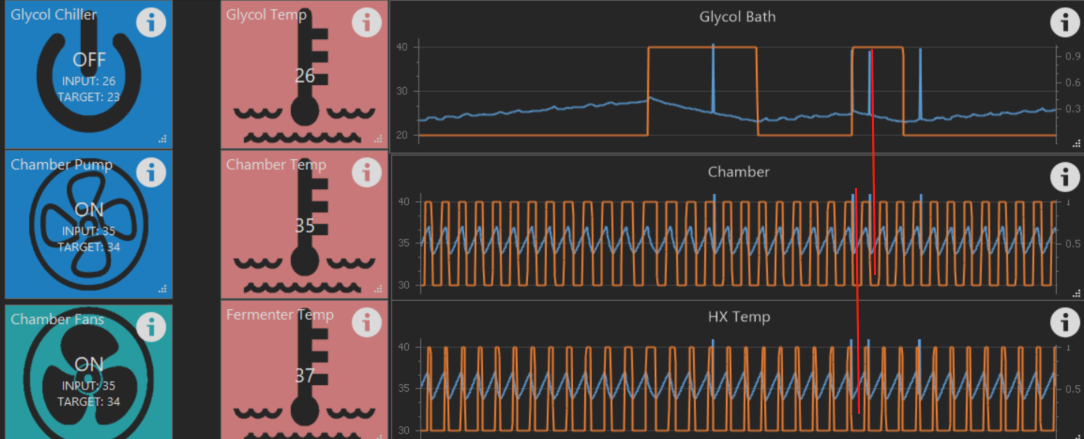I looked at every page of this thread for the word 'workspace' before posting... Can a device be present on two workspaces with a different name? even if only one is enabled at a time?
I read that names are required to be unique, and I was trying to set up a workspace for two different functions, say a work space for 'brewing' and a workspace for 'cleaning', but both use the same pump and heating element. I want the workspace to show the main function that is being performed, different background, etc... and most items will be different... However, when I select add device, I can select the proper i/o, but then 'digital output' is no longer available (interesting, the other output types, duty cycle and hysteresis, are available) ...
I even wrote my first script to look at a switch on the workspace and if it was on, it enabled all elements, if it was off, it disabled them... this was done after i learned the hard way that creating a new configuration *disables* all devices on your old configuration when you switch back to it... safety, I am certain, but it was a doh! moment when you have 30 devices and they all go to 'disabled'..
Maybe I am thinking about how to do this wrong, maybe instead of having 'brewing' and 'cleaning' as workspaces, I should have them as scripts started by a button/switch?


 Rant..I have plenty of time it seems to sort all this out now because Our brewery opening has been delayed Due to the local inspector changing his mind about letting us use an ac unit with a coolbot (after we spent most of our budget and built the coolbot cooler) Now we have to hire a licensed engineer to put it in writing that the coolbot/ac unit is safe to use indoors.. Nevermind just about every other smaller brewery in surrounding cities and counties uses them.. Frustrating for sure.
Rant..I have plenty of time it seems to sort all this out now because Our brewery opening has been delayed Due to the local inspector changing his mind about letting us use an ac unit with a coolbot (after we spent most of our budget and built the coolbot cooler) Now we have to hire a licensed engineer to put it in writing that the coolbot/ac unit is safe to use indoors.. Nevermind just about every other smaller brewery in surrounding cities and counties uses them.. Frustrating for sure.
















































![Craft A Brew - Safale S-04 Dry Yeast - Fermentis - English Ale Dry Yeast - For English and American Ales and Hard Apple Ciders - Ingredients for Home Brewing - Beer Making Supplies - [1 Pack]](https://m.media-amazon.com/images/I/41fVGNh6JfL._SL500_.jpg)






